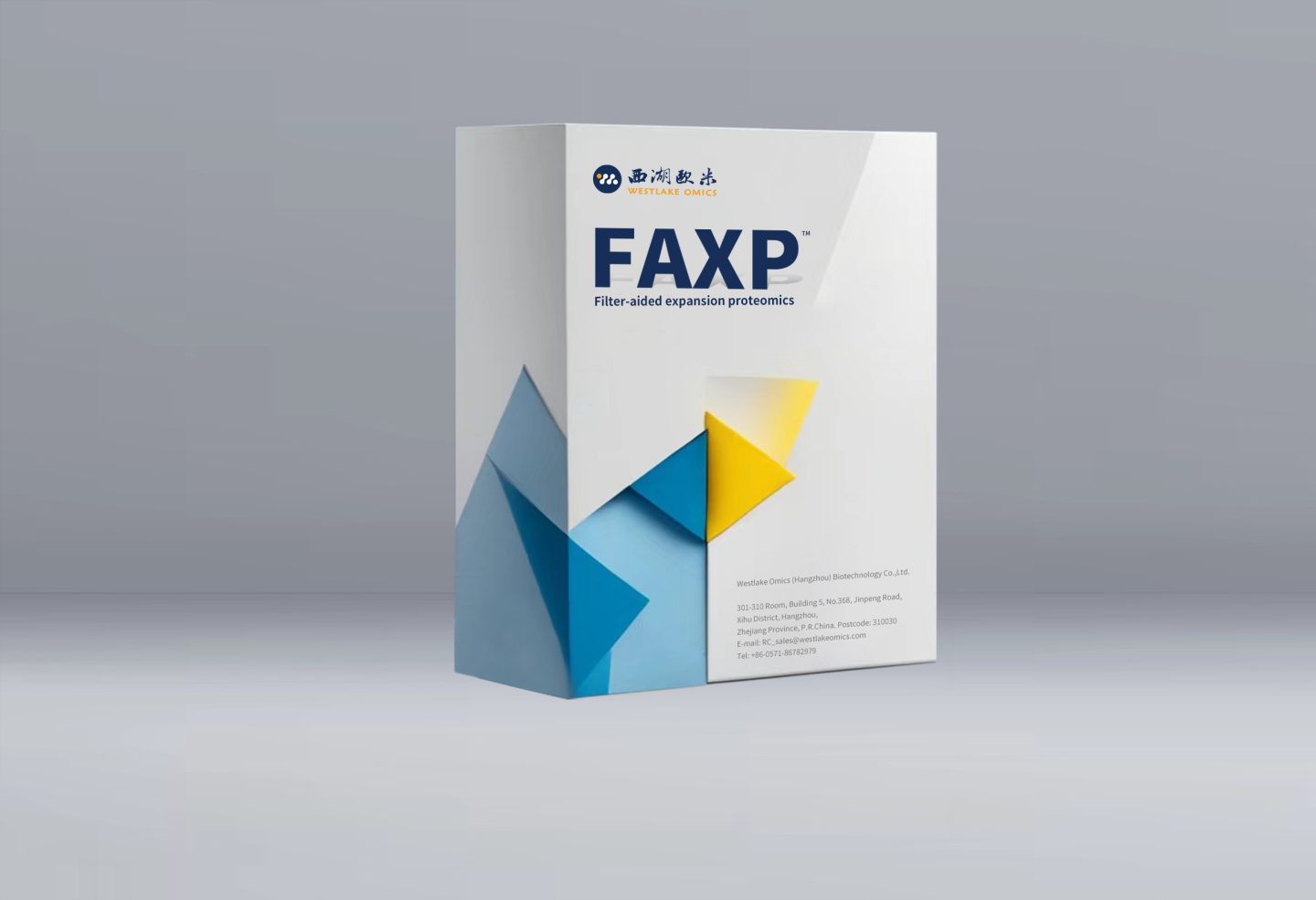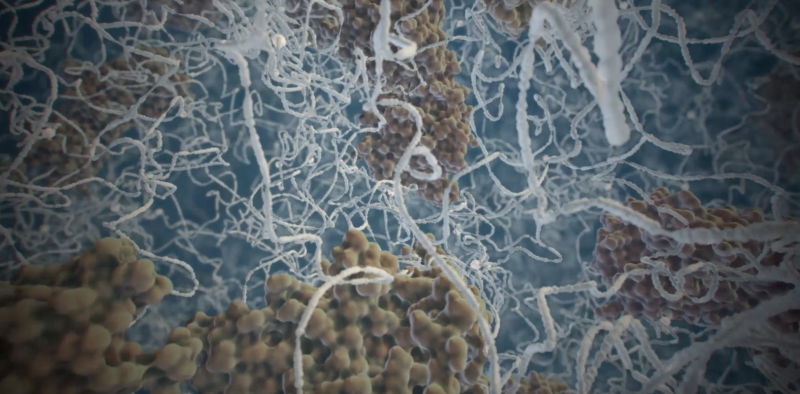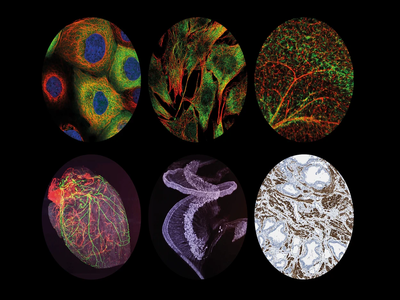Overview
Expansion proteomics, exemplified by technologies such as ProteomEx and FAXP, integrates tissue expansion with proteomic profiling to achieve nanoscale spatial resolution. By physically enlarging tissues, it enables detailed protein mapping using conventional imaging and mass spectrometry tools—enhancing both accessibility and analytical depth.
We refer to our series of expansion proteomics technologies as Paoding, inspired by the classical Chinese allegory “庖丁解牛” from Zhuangzi. Just as the butcher dissects effortlessly by understanding the intrinsic structure of the ox, Paoding represents a spatially precise, structurally informed dissection of complex tissues. This metaphor captures our goal: to uncover fine-grained molecular detail while preserving the spatial and biological context.

Publications
Perspective
We published a Perspective on Expansion Omics, where we review the current developments in this emerging area of spatial biology and propose a conceptual framework for its future directions.
Expansion omics: from expansion microscopy to spatial omics.
Molecular Systems Biology. 2025. https://doi.org/10.1038/s44320-025-00171-9
More
Method development
Our second-generation expansion proteomics workflow, Filter-Aided Expansion Proteomics (FAXP), was developed to enhance compatibility, resolution, and throughput.
Spatial proteomics of single cells and organelles on tissue slides using filter-aided expansion proteomics
Nature Communications. 2024 Oct 30;15(1):9378. doi: 10.1038/s41467-024-53683-7.
More
Our first-generation expansion proteomics workflow: ProteomEx.
Spatially resolved proteomics via tissue expansion. Nature Communications. 2022 Nov 30;13(1):7242. doi: 10.1038/s41467-022-34824-2
Nature Communications. 2022 Nov 30;13(1):7242. doi: 10.1038/s41467-022-34824-2.
More
Application
Application of FAXP to colorectal cancer.
Spatially resolved C1QC+ macrophage-CD4+ T cell niche in colorectal cancer microenvironment: implications for immunotherapy response
Cell Discovery. 2025. 11, 60. https://doi.org/10.1038/s41421-025-00811-2
More
Application of FAXP to Intrahepatic Cholangiocarcinoma.
Spatial single-cell proteomics landscape decodes the tumor microenvironmental ecosystem of intrahepatic cholangiocarcinoma
Hepatology. 2025 Feb 25.doi: 10.1097/HEP.0000000000001283
More
Application of FAXP to breast cancer.
Spatial multi-omics profiling of breast cancer oligo-recurrent lung metastasis
Oncogene. 2025. https://doi.org/10.1038/s41388-025-03388-y
More
Protocols & Tutorials

Standardized protocol for FAXP.
MoreKits, Services & Workshops
Kits

FAXP™ —— Expansion Kit For Spatial Proteomics and Super-resolution Imaging
Expansion Kit For Spatial Proteomics and Super-resolution Imaging
MoreServices

【Flagship Service】FAXP™ Single-Cell and Subcellular Resolution Spatial Proteomics
Single-Cell and Subcellular Resolution Spatial Proteomics
MoreWorkshops
Media & Highlights
Media

MSB| “基于组织膨胀的空间组学”系统框架
More
2025年10月17日,董振博士受邀参加第23届KHUPO年会并作报告

2025年09月13日,FAXP被遴选为首届“中国蛋白质组学十大进展”候选项目
More
2025年9月19日,董振博士荣获 π-HuB & CNHUPO 2025 大会颁发的 “π-HuB Rising Stars Award”
More
2025年7月3日,董振博士受邀参加首届单细胞蛋白质组学术会议,并报告了膨胀空间蛋白质组学的最新研究进展
More
空间蛋白组学上分!西湖欧米蛋白质谱学堂A班实录(6.24-25)
More
TIBS|膨胀蛋白质组学入选「月度技术」
More
Nature专访:从空间蛋白质组学到AI虚拟细胞
More
Nat Comm|FAXP:石蜡切片中单个亚细胞器的深度蛋白质组分析
MoreTechnology features
FAXP was selected as a Featured Protocol by Nature Protocols.
Nature Protocols (2025) doi: https://doi.org/10.1038/s41596-025-01256-3
More
Our expansion proteomics technology was selected by Trends in Biochemical Sciences as a Technology of the Month.
Tissue expansion enables proteomics at improved spatial resolution
Trends in Biochemical Sciences (2025) doi: https://doi.org/10.1016/j.tibs.2025.06.002
More
Our work on expansion proteomics was highlighted in a Nature Technology Feature article (April 2025).
Where do proteins go in cells? Next-generation methods map the molecules’ hidden lives
Nature 640, 556-560 (2025) doi: https://doi.org/10.1038/d41586-025-01045-8.
More
Expansion microscopy was highlighted in a Nature Technology Feature article (January 2025).
‘Expansion microscopy’ turns ten: how a tissue-swelling method brought super-resolution imaging to the masses
Nature 637, 752-754 (2025) doi: https://doi.org/10.1038/d41586-025-00059-6
More
Q & A
1. What is Paoding?
Paoding (庖丁), originating from the ancient Chinese philosophical text Zhuangzi, refers to the legendary butcher known for his ability to dissect an ox with such precision and fluidity that he never needed to sharpen his knife. His skill lay not in brute force, but in understanding the structure—working with the natural separations between bones, tendons, and muscles. In modern metaphor, Paoding represents the pursuit of mastery through deep structural understanding and precise execution.
Inspired by this philosophy, Paoding is the name we give to our expansion proteomics framework—a series of technologies (e.g., ProteomEx, FAXP) that dissect biological complexity with spatial and molecular precision. Like the ancient art of Paoding, our methods aim to "cut through" tissue systems not by destroying them, but by expanding, clarifying, and mapping their inner structures with nanoscale resolution and integrated molecular detail.
2. What types of samples are compatible with FAXP?
FAXP is compatible with paraffin sections, OCT-embedded frozen sections, and vibratome sections. However, it is recommended to mount the sections on slides pretreated with polylysine for optimal adhesion and expansion performance.
3. Can stained samples be expanded?
Yes, stained samples can be expanded using FAXP. Slides stained with HE or immunofluorescence can be directly expanded using FAXP. However, re-staining is necessary after expansion. Currently, samples that have undergone immunohistochemistry—particularly those with strong chromogenic signals—are not suitable for expansion.
4. What staining methods are compatible with expanded samples?
After expansion, the samples can be stained with Coomassie Brilliant Blue, immunofluorescence, immunohistochemistry, and silver staining. Other staining methods may also be applicable but require further validation.
Contact & Collaboration
Please contact guotiannan@westlake.edu.cn for general inquiries and collaborations.
